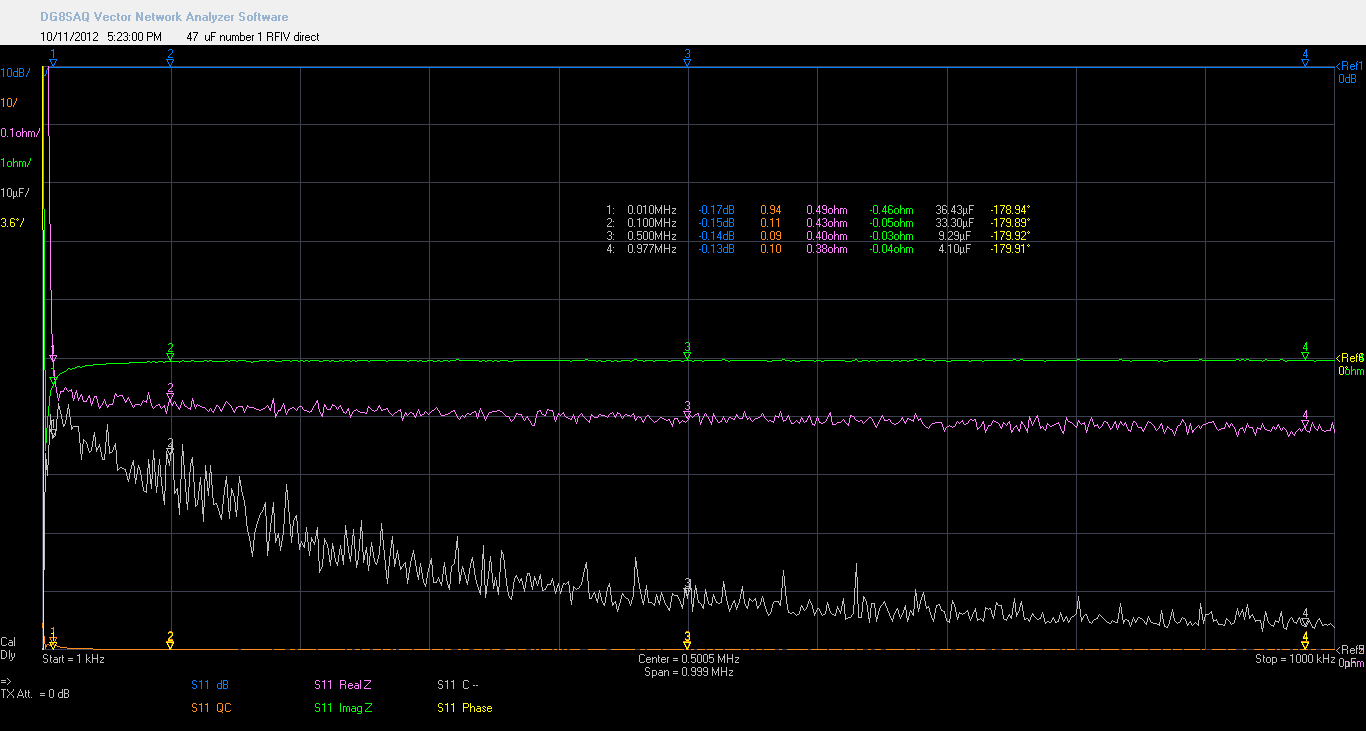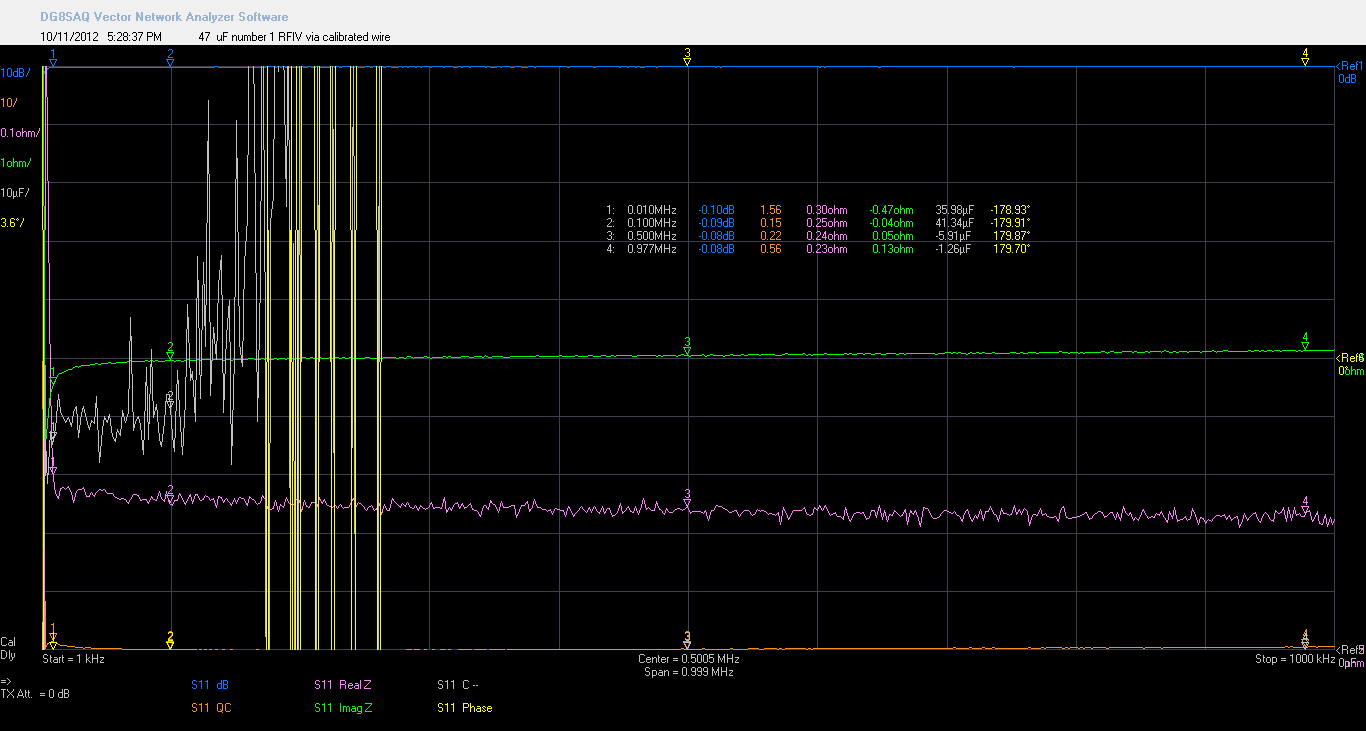I have done a lot of VNA meaurements on capacitors. But also using RF-IV like you do ( but I can do phase too) i can sweep from 1KHz to 1500 MHz. Also have several bridges including the famous GR1620.
It is long told the ESR is at it lowest point at SRF, but like your plot of a new cap hows, it is not.
Indeed the ESR can never be higher as Z and is equal to Z at resonance, but that does not have to be the lowest value.
About decreasing frequency and increasing ESR, your plots show what I mean, it is not lineair, it falls off quick from allmost DC to about 20 Khz and then it goes more slow.

Calibrated good fixture

Calibrated but bad fixture for the same cap
BUT, do you use a real calibrated fixture for these sweeps ?
And has your calibrationkit known parameters ?
I use a calibration that involves open, short, load and a series of knoen capacitors so allmost all strayes are compensated for. The VNA then uses 12 term error correction. I use special low Z fixtures for ESR and high Z fixtures for things like measuring fF ( and customtraces to transform S21 into R + jX.
What instrument you use, the plots look very good, similar to what I get ( how the Rs and Z behaves)
Problem with real good ( mica, MKP ect) caps is to find the SRF because, deembeded and clibrated right it can be several hundred MHz. Then calculate ESL from that and make a corrected jX sweep. If calibration goes wrong you are only looking at the SRF of the setup.